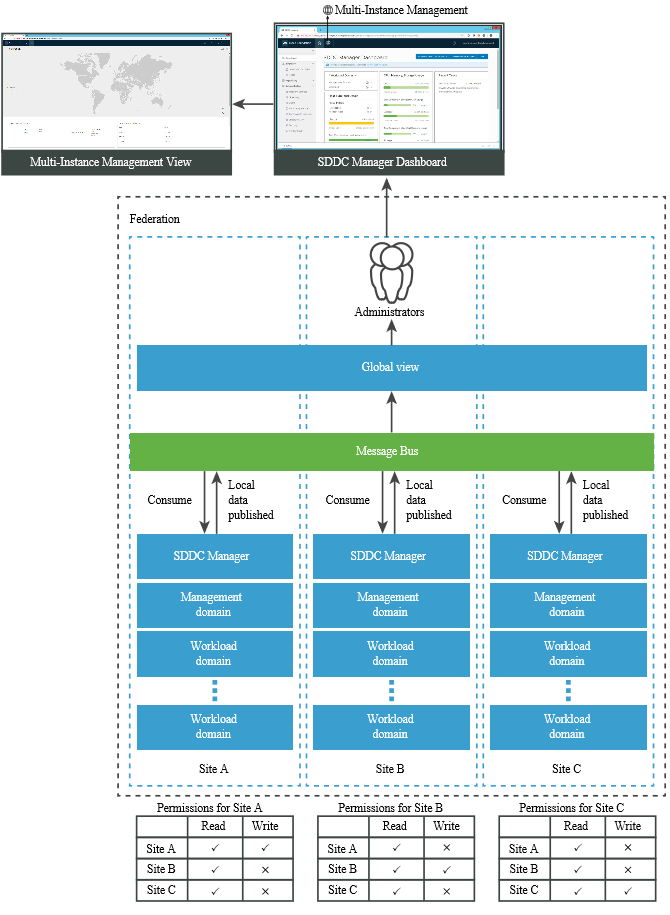With the Multi-Instance Management feature, you can monitor multiple SDDC Manager instances from a single console.
Multiple SDDC Manager instances can be monitored together by grouping them into a federation, such that each member can view information about the entire federation and the individual instances within it. Federation members can view inventory across the SDDC Manager instances in the federation as well as the available and used capacity (CPU, memory, and storage). This allows you to maintain control over the different sites and ensure that they are operating with the right degree of freedom and meeting compliance regulations for your industry. It also simplifies patch management by showing the number of patches available across sites in the global view.

An SDDC Manager instance can see details about the federation only if it is a member of the federation, and can belong only to a single federation at a time. It is possible to create multiple federations within an organization; however, there is no global visibility between federations. For example, it might be desirable to have a dev-test federation and a production federation. In such an example, members of dev-test can see other dev-test members but they are not able to see production members.
Federation members can either be controllers or regular members. A controller member has capabilities of a regular member and runs some additional message bus components to allow multi-instance management to work.
A controller member can invite other instances to become members as controller or regular members. The controller role can be granted to a maximum of three instances within a federation. High availability of multi-instance management functionality is only possible when there are exactly three controllers in the federation. Though the controller members can be at any three sites in the federation, it is recommended that each controller is in a different availability zone. The SDDC Manager instance that created the federation is automatically granted the controller role. If you only have two instances in the federation, there is no need to create both as controllers. Multi-Instance management works with two VMware Cloud Foundation sites; however, if one fails then the multi-instance capability is not available on the other site.